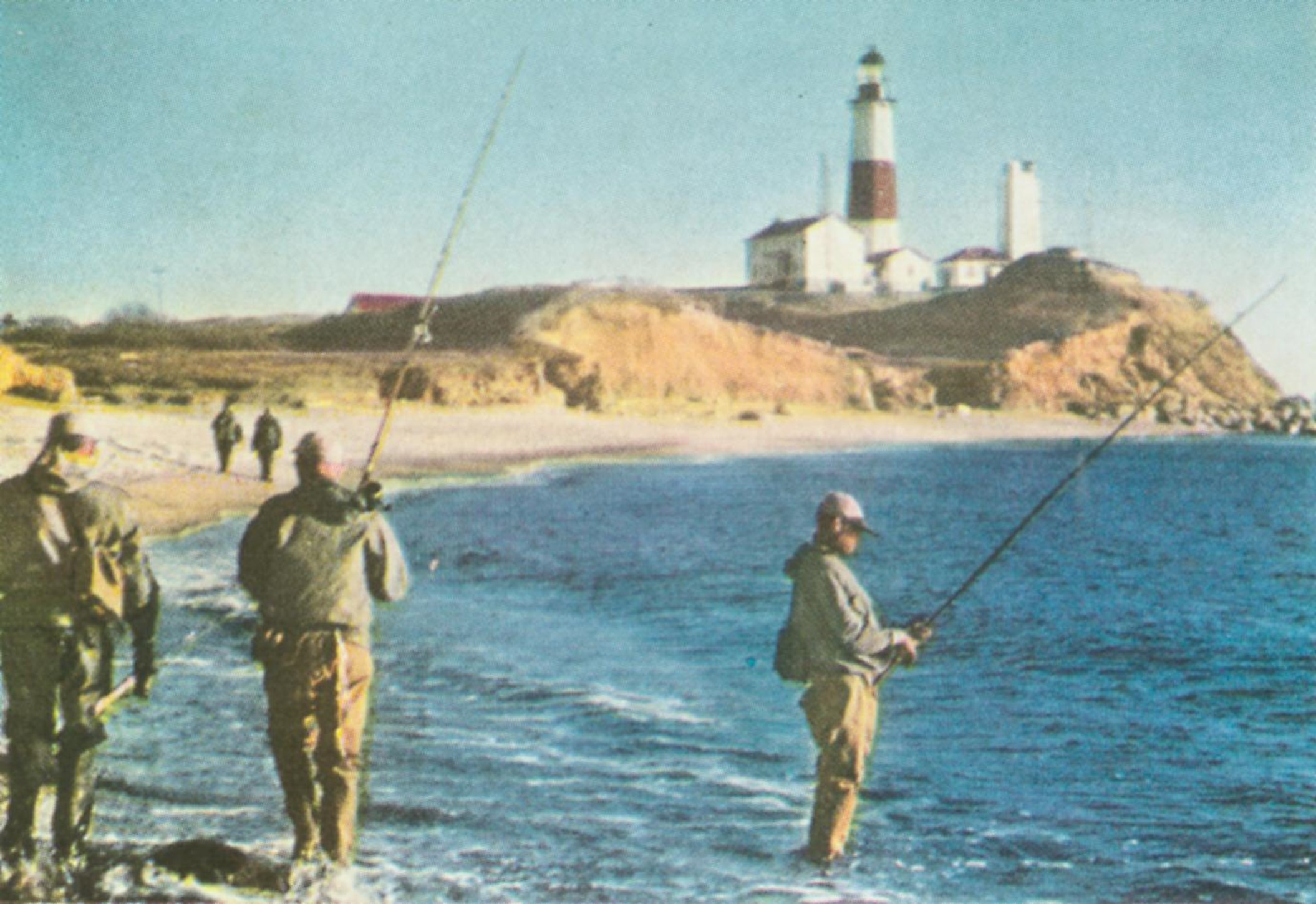
On December 7, 1923, the East Hampton Star reprinted, on its front page, a fish tale that had appeared a few weeks earlier in the Newark Evening News. Of course it mentioned the largest striped bass caught by surfcasters in a blitz near Montauk Point so far that season – 42 pounds.
“But not this season, nor any other season, has the Montauk Point record, established last Thanksgiving Day by Captain John Miller, sr., ever been surpassed, or, really, ever approached,” the News article continued.
“Captain Miller, a retired New York policeman, keeper of the light at Montauk Point, in a little more than one hour’s time, took, on fifty-seven casts, fifty-six striped bass.”
The article went on to explain that the captain had repeatedly raced back to the water to cast again with the goal of “filling the barrel with fish to supply the months when striped bass were not to found at the Point.”
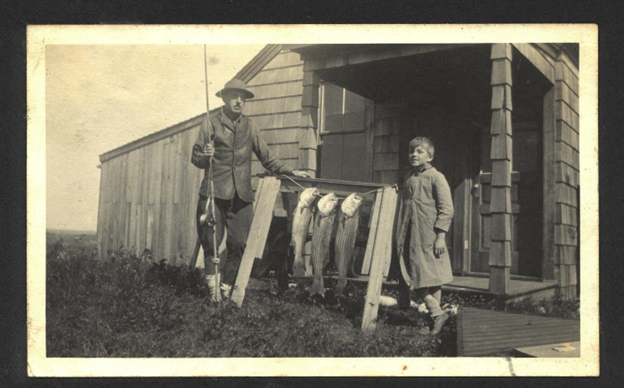
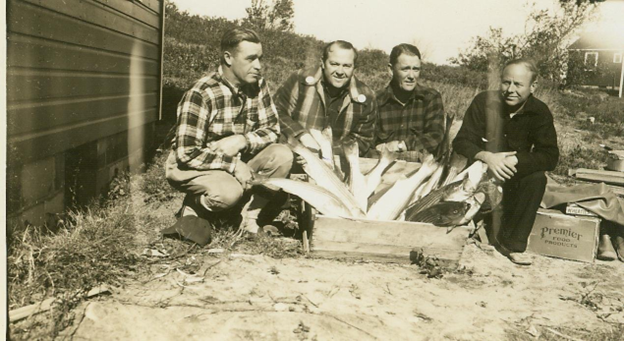
It’s hard to imagine taking a catch of so many fish. Striped bass live in the ocean but spawn in freshwater, often traveling long distances during what can be a life span of 30 migration seasons. Bass that were tagged in the Chesapeake Bay have been caught in waters as far away as Canada. They can reach five feet and 77 pounds or more. As they travel, they hunt baitfish in the wash, making them a popular target of recreational surfcasters in addition to charter boat captains and commercial fishermen, including, at least in the past, local baymen.
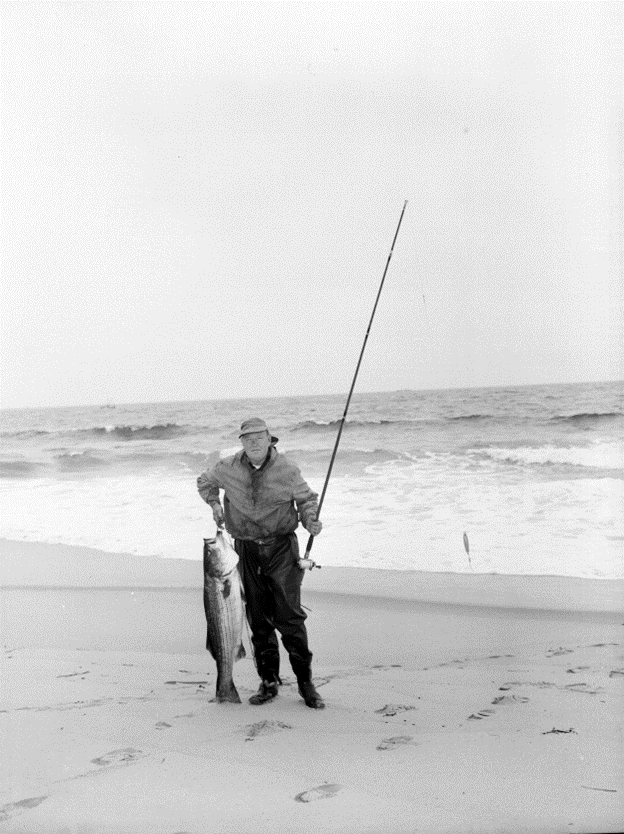
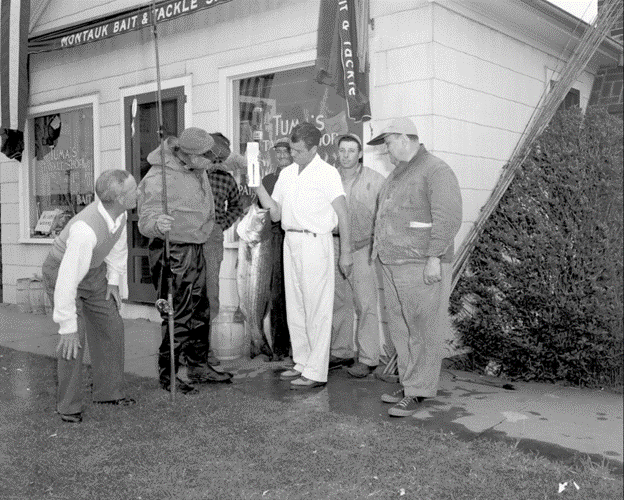
Diminished numbers, as well as PCB contamination in the Hudson River, triggered a moratorium on harvesting striped bass in the 1980s, followed by a series of regulations aimed to boost the population. It seemed to be rebounding until about five years ago, when a diminished number of young stripers – females need to reach four to eight years to reproduce – rekindled concerns.
Currently in New York State, surfcasters are permitted to keep only one fish between 28 and 31 inches long (the equivalent of about 12 pounds) per day, and only between April 15 and December 15. To help striped bass survive the catch-and-release process – very often they do not — circle hooks, which are comparatively less harmful, have to be used when fishing with bait.
“Montauk Point is the home of big stripers. It is almost a quarter of a century ago that William J. Morgan got there his seventy-six pound striped bass, which attracted more to Montauk Point than any other event in piscatorial history up to that time,” the Evening News story said. Even a fish that large would not be a keeper today.

Reply or Comment